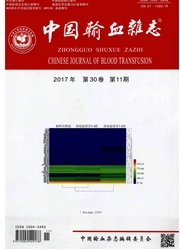

 中文摘要:
中文摘要:
目的 将深度测序法用于HCV感染者中不同基因型/亚型混合感染的检测。方法 2例HCV RNA阳性血浆标本(标记为1和2号标本),以NS5B和E1编码区为目的基因,经RT-PCR扩增后做sanger核苷酸序列测定,对其做基因分型发现2个编码区的分型结果后,重复3次NS5B基因PCR扩增;合并3次PCR产物用Ion TorrentTM半导体测序仪做深度测序。获得的序列用Geneious软件的“The map to reference algorithm”和“De novo assembly”2种方法做序列分析和比对,并用Mega 5构建进化树。结果 sanger测序:1、2号标本NS5B基因分型均为1b,E1基因分型均为2a;深度测序:2个标本均为HCV 1b与2a混合感染,其中The map to reference algorithm(Geneious)方法显示,1号标本中1b占92.7%、2a占3.8%、没有比对到的序列(unused seq)占3.5%,2号标本相应为84.3%、5.4%,没有比对到的序列占10.3%;De novo assembly(Geneious)方法显示,1号标本中1b占96.3%、2a占3.7%,2号标本相应为94.1%、5.9%。结论 深度测序技术可以精确地获得HCV混合感染的不同基因型/亚型信息,De novo assembly(Geneious)分析HCV的深度测序数据更为精确和直观。
 英文摘要:
英文摘要:
Objective To identify infection of mixed hepatitis C virus (HCV) genotype/subtype by deep sequencing. Methods Plasma samples from two individuals infected with HCV were collected. Disparate HCV genotypes were found in both persons between NS5B and E1 gene by RT-PCR and then Sanger sequencing. NS5B was amplified for three times and pooled together, which were subsequently applied to deep sequencing by the Ion Torrent system. Sequencing results were an-alyzed and aligned by two methods in Genious software: "map to reference algorithm" and "de novo assembly". Mega5 was used to construct phylogenetic tree. Results Sanger sequencing revealed subtype lb on NS5B and 2a on E1 for both sam- pies. Deep sequencing on NS5B also revealed a mixed infection with HCV lb and 2a. From the analysis in "the map of ref- erence algorithm", subtypes lb and 2a accounted for 92.7% and 3.7% of the total reads ( unused reads accounted for 3.5% ) for sample 1 , while lb and 2a accounted for 84. 3% , and 5.4% for sample 2 ( 10. 3% unused reads) , respectively. "De novo assembly" analysis revealed that the percentage for lb and 2a were 96. 3% and 3.7% for sample 1, and 94. 1% and 5.9% for sample 2. Conclusion Deep sequencing is a powerful tool that can precisely identify mixed infection with multiple HCV genotypes/subtypes. De novo assembly performs a better analysis on deep sequencing data.
 同期刊论文项目
同期刊论文项目
 同项目期刊论文
同项目期刊论文
 期刊信息
期刊信息
